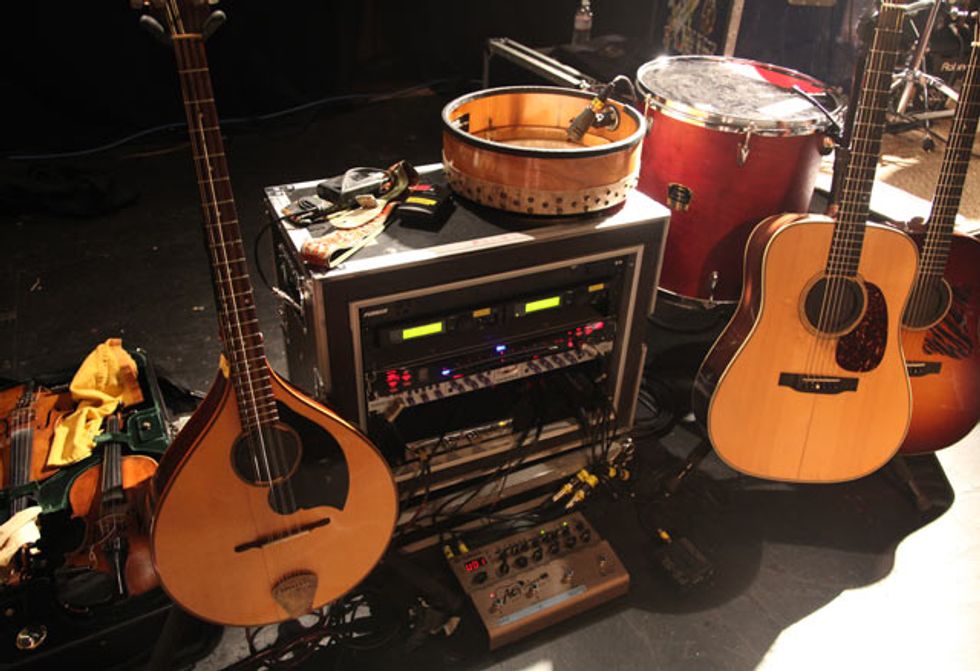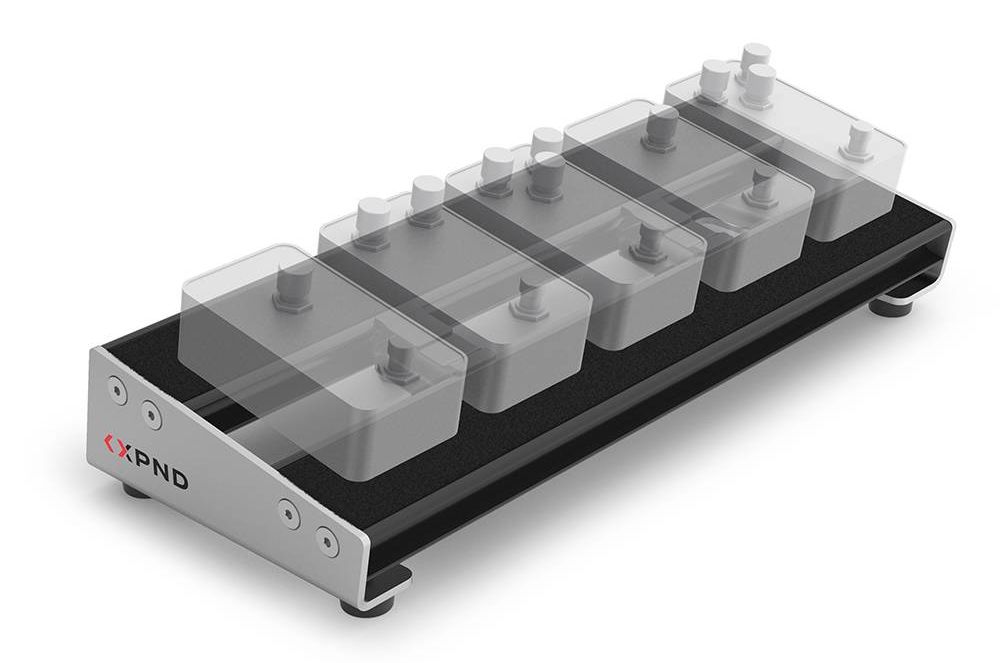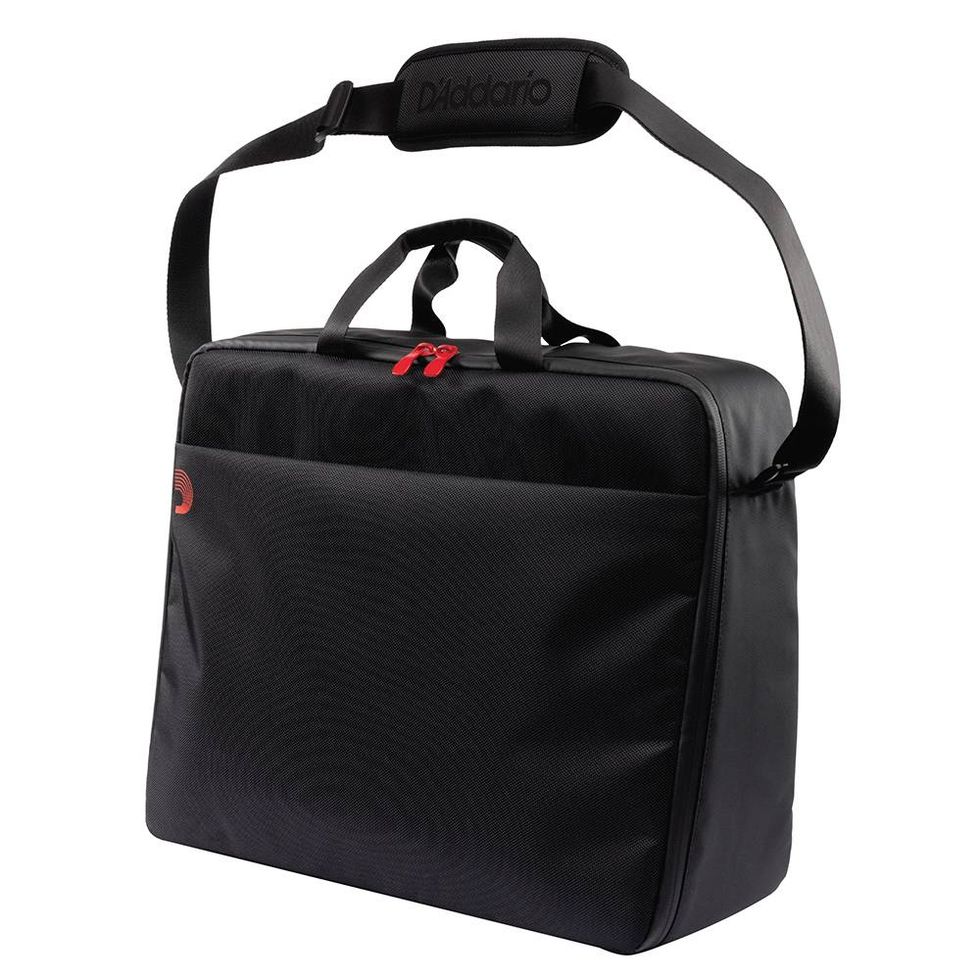
Gaelic Storm's guitar and fiddle rack.
Gaelic Storm is a celtic rock band that plays upwards of 125 dates per year and are one of the most popular bands in the Celtic genre. After over a dozen years of solid touring, Gaelic Storm has figured out how to tour efficiently and effectively. We talked with Gaelic Storm's tour manager to get a feel for the gear this working band relies on.
Gaelic Storm plays many of the acoustic instruments that you would expect to find in a band focused on making rousing celtic and music: fiddle, steel string guitar, highland bagpipes, uilleann bagpipes, tin whistle, accordion, and hand percussion on congas and doumbek drums. What you might not expect to hear are electronic bagpipes as well as an electronic bass drum, which is triggered by a Roland KD8 Trigger Pad. That being said, the band doesn't need amps and loads of equipment on stage to make the big sound that accompanies the high-spirited atmosphere of their live shows.
The few racks of gear that the band tours with carry essential signal processing and the wireless systems. Guitarist Steve Twigger uses a Fishman Aura pick up on his Collings guitar, the output of which feeds a Shure ULX-1 transmitter and ULX-P4 diversity receiver to allow for absolute freedom to move about the stage. Twigger also uses a PreSonus Eureka Pro Channel Strip and a Yamaha AG Stomp to smooth out his sound. Fiddler Jessie Burns uses a Shure ULX wireless system to transmit the sound that is captured by her LR Baggs Violin pick up. Jessie is a huge fan of her Grace Model 101 pre-amp which is the last piece in her signal chain. Lead singer and accordion player Patrick Murphy sings into a ULX series wireless handheld with a Beta 58 capsule, and even though you can't hold a wireless mic and play accordion at the same time, his accordion is also wireless for those moments when he's not in front of the mic. Bagpiper Peter Purvis, who is at the opposite side of the stage from Jessie Burns, would feel stranded if his bagpipes weren't also wireless. Having everyone fully wireless makes the show more interesting to watch and encourages spontaneity. There are always those few special shows where the band gets inspired to hop off stage and up onto the bar where they'll play out the end of the show surrounded by the audience.
Of course, none of this would be possible if the band couldn't hear themselves wirelessly too. Gaelic Storm's personal monitor system revolves around a Crest Audio X-Series X 20RM analog monitor desk. The band is running right around 20 channels, so the board is a great fit and the internal XLR splitter allows them to roll into a venue, patch in their XLR fan-outs, and move swiftly towards soundcheck. The advantage of this system is that it is built into a rack case with casters that is rolled out right onto stage. This allows the band to make necessary adjustments to their mixes onstage while keeping the touring crew to an efficient minimum, without the need for a full time monitor engineer. The in-ear monitor system includes two PreSonus ACP-88s for compression before the mixes reach the Shure PSM 600 transmitters. The remaining channels of compression are used to keep certain instruments under control in the monitor mixes. Both Steve Twigger and percussionist Ryan Lacey are using custom-molded Ultimate Ears UE 10 Pros while the rest of the band is using Shure SCL-5s. A pair of small condensers serve as audience microphones so the band can maintain the intimate nature of their shows and interact with the crowd throughout the show.
gaelicstorm.com



















![Rig Rundown: Russian Circles’ Mike Sullivan [2025]](https://www.premierguitar.com/media-library/youtube.jpg?id=62303631&width=1245&height=700&quality=70&coordinates=0%2C0%2C0%2C0)






